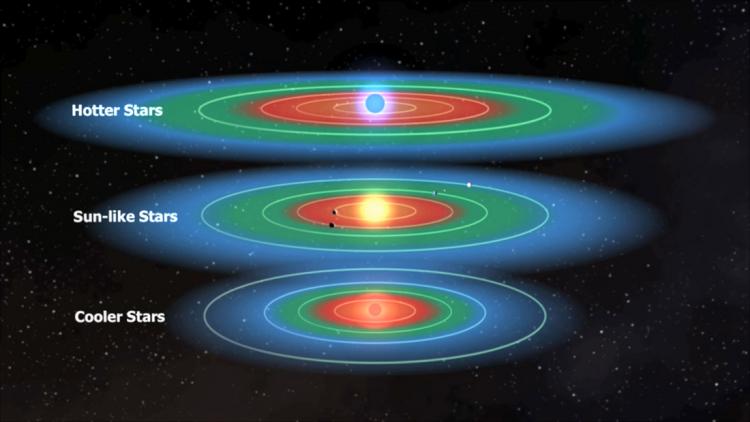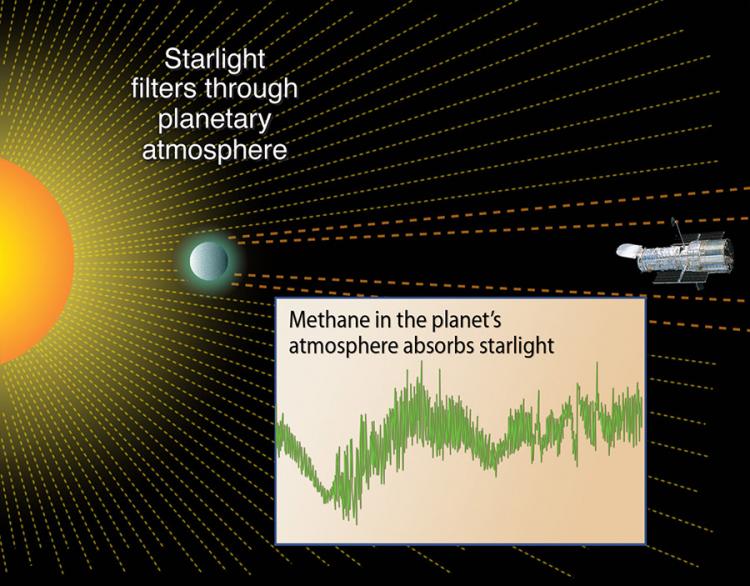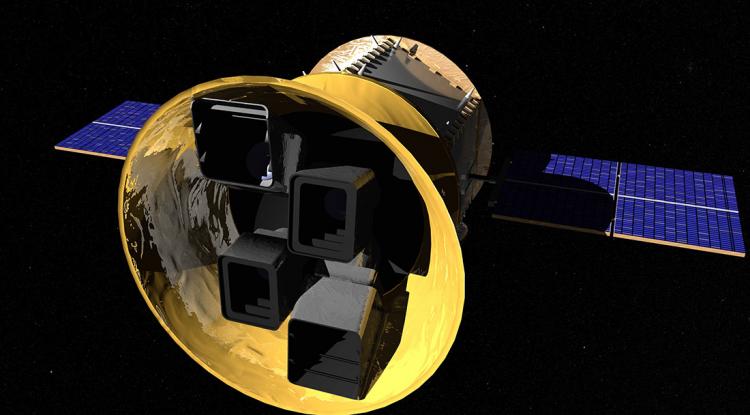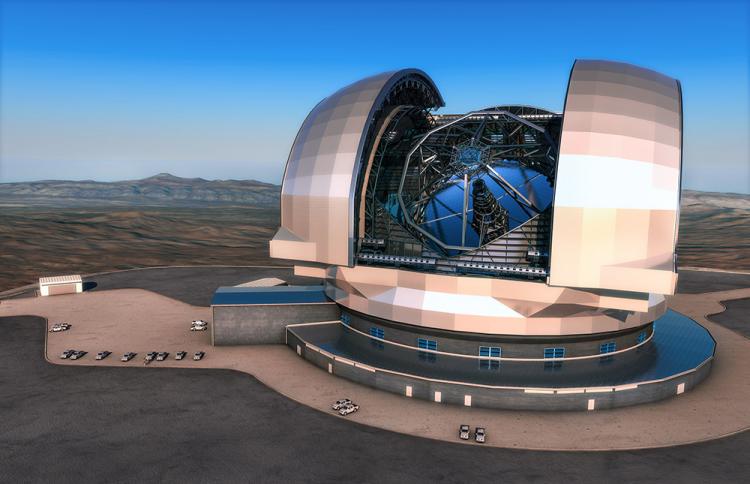If any aliens in our galaxy have been studying Earth from afar, they might be interested in a particular computer at Cornell University. Here, researchers have compiled a catalog detailing how 137 homegrown microorganisms reflect a broad spectrum of light. Although this digital library is intended to provide future terrestrial researchers with tools they might need to determine if life exists on any of the billions of worlds in our galaxy, those studying life on Earth might also find it a useful key.
Lisa Kaltenegger, an astronomer at Cornell and one of the researchers responsible for the database, has spent most of her career pursuing worlds beyond our solar system and studying how we might learn whether any of them host life.
Since 1992, astronomers have cataloged roughly 3,700 planets, dozens of which could be habitable. Upcoming missions could add dozens more. Knowable Magazine recently chatted with Kaltenegger about the search for habitable planets and what we can hope to learn. The conversation has been edited for length and clarity.
What do astronomers mean when they talk about “habitable worlds”?
It depends which astronomer you’re talking to. I usually say “potentially habitable world,” because the only habitable world we know of is Earth. All these other places that could be like us, we don’t really know if they are. As long as they fit the criteria that they’re small enough and a certain distance from the star where water wouldn’t evaporate off or freeze down, then they’re potentially habitable worlds.
Now it’s perfectly fine to be a habitable world if you’re frozen over. But for us to see it, to find life on other worlds where we can’t fly and drill through the ice, we really have to see that the atmosphere gets changed due to life. And therefore we have defined this habitable zone as where water could be liquid, if it exists. It doesn’t mean that outside the habitable zone can’t be habitable, it just means that we won’t be able to pick it out easily.

In the search for life, astronomers focus on planets in a star’s habitable zone (green), the region around a star where a planet could potentially harbor liquid water. For cool stars, that zone is relatively close to the star; for hot stars, the habitable zone extends farther away.
CREDIT: NASA
What drew you to the search for these worlds?
I’m curious by nature. I love figuring things out. What I find amazing is that our generation lived through a time where the horizon is not the ocean. The horizon now starts to be the universe.
There’s two questions here for me. One is, I would like to figure out whether we are alone in the universe, and how easy it is for life to get started. But the other thing that is maybe more important to our survival is that when we find other Earths, we’ll find some that are older, we’ll find some that are younger. So every new Earth we find … will tell us a puzzle piece of how an Earth works and how it actually evolves through time.
And finding new worlds and figuring out what worlds can exist … I just find that cool.
What can we hope to learn about these planets, given that they are so far away?
If a planet goes in front of the star, part of the light from the star gets filtered through the air of the planet. Light is energy; therefore it can hit a molecule and make it swing and rotate. That light doesn’t get to me and my telescope. So the missing light tells me about chemicals that the light encountered before it got to me.
Most of the planets we have been able to characterize are something akin to Jupiter but much hotter. Some of them are going down to the mass of Neptune [which is still large — roughly 17 times as massive as Earth]. Some of them are farther away from their suns, but they’re so young that we still see them because they just got crushed with all this material — we can see them because they’re hot.
The diversity of planets is breathtaking. Every star has at least one planet. One out of five has a planet that could potentially be like our Earth. And we have 200 billion stars in our galaxy alone. One out of five makes 40 billion potentially Earth-like planets, and we have billions of galaxies after that. I like our chances of finding life in the universe.
Planets around the stars Proxima Centauri (the closest star to the sun) and TRAPPIST-1 recently made big headlines. What’s all the fuss about?
If you do a Lonely Planet guide to the best destinations in the solar neighborhood, they would be on it because they are the closest.
Even [the closest star] seems to have a planet that could be like the Earth, because it’s roughly the right mass. We don’t have that much info, but it’s at this right distance where if water exists, it should be liquid. It’s a huge flare star. However, that is super exciting too. If we find life on a planet around a flare star, that means life can adapt to kind of anything.
TRAPPIST-1 is also very close by [about 40 light-years]. But the great thing about that system is they have seven Earth-sized [planets] — some a bit bigger, some a bit smaller — and three of those rocks, maybe four, are within this habitable zone. We have a chance with JWST [the James Webb Space Telescope] and the E-ELT [the ground-based European Extremely Large Telescope] to actually get a glimpse into that atmosphere and figure out whether or not there are signs of life and how planets change.

Illustration of NASA’s James Webb Space Telescope, widely thought of as the successor to Hubble. It will be the first telescope capable of investigating the atmospheres of small rocky exoplanets.
CREDIT: NASA
Do you ever worry that life will be so alien we won’t be able to recognize it?
Absolutely. I think one of the things that we’ll always do is we’ll keep our eyes open for things that we can’t explain. However, the big problem is that even if you look at life on the Earth — for the first 2 billion years, it produced carbon dioxide and methane alone. And that’s not unique to life. This could also be just outgassing of some material [created by physical or chemical processes, not via biological activity]. This is why we would need an incredibly conservative thing to look for so that we really have no other explanation than life. [For example, one gas isn’t enough. Plants create oxygen, but so do water molecules when they’re split by ultraviolet light from the sun.] And this is why we came down to oxygen with methane or nitrous oxide, or ozone with methane. It has to be a combination of gases.

When a planet passes in front of a star, some of the starlight gets filtered through the planet’s atmosphere. Molecules in the atmosphere — in this case, methane — betray their presence by absorbing certain frequencies of the starlight. This illustration shows the Hubble Space Telescope measuring methane around the exoplanet 189733b.
CREDIT: NASA, ESA, and A. FEILD/STSCI
Are there methods that don’t depend on specific gases, such as looking for planets whose atmospheric gases are out of balance with each other?
It would be really nice if you could generalize it. But since 1965, there has been no other combination [of gases] that people have proposed that hasn’t been disputed [because geochemical processes alone could have produced the putative signature of life]. Dave Catling and his team at the University of Washington [looked at this and found] that Mars is actually more out of equilibrium than the Earth. So if you just had that metric, you would say there’s life on Mars.
What are some upcoming missions that will help in the search for life?
The most exciting mission in terms of finding close-by exoplanets that we can look at is going to be TESS [the Transiting Exoplanet Survey Satellite scheduled to launch in March 2018]. It’s going to look at all the brightest and closest stars and try to find planets. We’re expecting hundreds to thousands of Earth-sized planets and among those a couple of dozen in the habitable zones.

Illustration of NASA’s TESS satellite. It will scan the sky looking for exoplanets around the brightest and closest stars.
CREDIT: CHRIS MEANY/NASA GSFC
This is why TESS flies before JWST, to give JWST something to look at. JWST is going to be the first time that we can actually look at the atmospheres of such small planets because it has enough collecting area to give us enough light. It’s going to be hard, it’s going to be at the breaking point of technical possibility, but it’s doable.
Where do you see this field going in the next 20 to 30 years?
It’s going to be an extension of planetary science. It will actually encompass the whole picture. Planetary science does eight planets, and asteroids, and stuff in our solar system. But now with better telescopes, we’ll add that kind of information for many other alien suns and their planets to the mix. The data we’re getting right now is like the first data we got on Mars.
The other solar systems should yield more and more information to the point where we can actually put our planetary system in context. We won’t be able to travel there, but we’ll be able to catch more and more of the light and maybe figure out what’s on the surface.
This is humankind’s next adventure. We’re not going to get off this planet anytime soon, and that’s fine, I love this planet. However, being able to actually spot the other worlds that future generations could get to, I think is just fun.

Illustration of the European Extremely Large Telescope, currently under construction in Chile and scheduled to begin operation in 2024. It will be a ground-based telescope that should also be able to investigate exoplanet atmospheres and possibly get a picture of Proxima b.
CREDIT: L. CALÇADA/ESO




